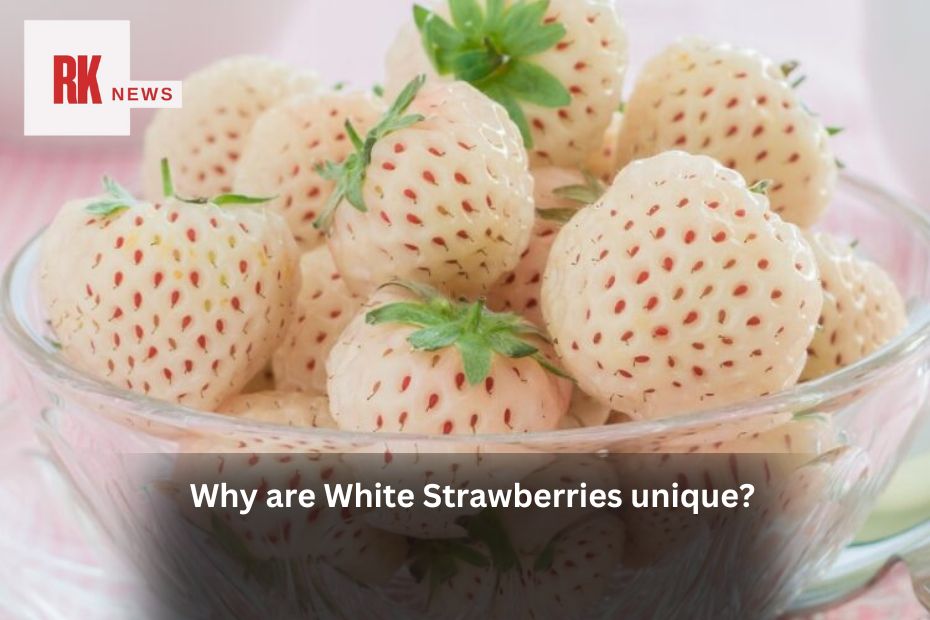People know strawberries for their great taste, gorgeous color, and adaptability rather well. From classics like strawberry shortcake to modern variations on favorites including roasted strawberry and basil lemonade, there are countless ways to love and savor strawberries. Although almost everyone enjoys these berries, most people are unaware that there exist other varieties of strawberries.
Meet the white strawberry, a kind of strawberry devoid of or deficient in the protein responsible for usual redness of strawberries. Except for their white color with red seeds, these berries resemble conventional strawberries exactly. Apart from their look, some white strawberries are sweeter and taste more tropical as well.
While many people see redness as a main sign of strawberries’ maturity, white strawberries can be absolutely delicious and ripe without the characteristic red color. Furthermore delicious in all kinds of strawberry recipes—including strawberry butter—are they Should you spot them in the store, grab them and test them for yourself.
About White Strawberries
Fra a1 is the protein chiefly responsible for turning most strawberries red when they ripen. White strawberries often lack this protein completely or perhaps have very low levels. Because of relatively low levels of this protein, white strawberries may become a subtle shade of blush pink at optimal ripeness; other times they will remain entirely white.
There are various white strawberry cultivars available, each with different degrees of color—or lack thereof. Made from crossing a Japanese white strawberry with a standard red Florida strawberry, the pineberry is among the most often used and somewhat identifiable species. Usually with a luxury price tag since the fruit is regarded as a unique novelty item, this type is grown and sold mostly in Japan.
Although there are other varieties of white strawberries in the United States, pineberries are the most often consumed one. Other well-known white strawberry varieties are the Beach strawberry, native to the Pacific coastlines of North and South America, and the Alpine strawberry, native of Europe. Every white strawberry version also has an umbrella of variations beneath it, each with distinct white flesh and somewhat pineapple-like taste.
What Makes White Strawberries Unique?
- Distinct Appearance
Unlike typical strawberries, white strawberries have a pale, creamy white or light pink exterior with bright red seeds. This striking contrast makes them visually appealing and a novelty in the fruit world. - Rare and Exotic Varieties
White strawberries are relatively rare compared to common red varieties. They are primarily cultivated in select regions and often command a premium price due to their uniqueness and limited availability. - Different Flavor Profile
White strawberries are known for their tropical, slightly pineapple-like taste. Their sweetness is often more pronounced than that of traditional strawberries, with less acidity, making them a delightful treat for fruit lovers. - Crossbreeding Origins
Many white strawberry varieties are the result of intentional crossbreeding. For example, the pineberry, one of the most famous types, was developed by crossing a Japanese white strawberry with a Florida red strawberry. This hybridization process has led to different white strawberry cultivars with unique flavors and textures. - Grown in Limited Regions
White strawberries are primarily cultivated in Japan, the U.S., and some parts of Europe. Japanese white strawberries, such as the “Shiroi Houseki” (White Jewel), are known for their exceptional sweetness and high market value. - Maturity Without Redness
Unlike traditional strawberries, which turn red when ripe, white strawberries remain white when fully mature. This can sometimes make it tricky for consumers to judge their ripeness, but once you learn to recognize their texture and slight pink blush, you’ll find them just as easy to enjoy.
Popular Varieties of White Strawberries
- Pineberry – A hybrid variety with a pineapple-like taste, widely grown in the U.S. and Europe.
- Shiroi Houseki (White Jewel) – A luxury Japanese variety known for its large size and extreme sweetness.
- Beach Strawberry – Native to Pacific coastal regions of North and South America, this wild strawberry has a mild, sweet flavor.
- Alpine Strawberry – Found in Europe, this variety has a delicate texture and an aromatic, fruity taste.
How to Enjoy White Strawberries
White strawberries can be used just like traditional strawberries in various recipes. They work well in fruit salads, desserts, smoothies, and even gourmet dishes. Their unique color and flavor also make them a visually stunning addition to cakes, pastries, and specialty cocktails.
If you ever spot white strawberries in a store or farmer’s market, don’t hesitate to try them! Their rare, sweet, and tropical flavor offers a delicious twist on the classic strawberry experience.
Conclusion
White strawberries are a fascinating and rare variation of the classic red strawberry, offering a unique appearance, tropical sweetness, and an exotic appeal. Their lack of the Fra a1 protein prevents them from turning red, but they are just as delicious—if not sweeter—than traditional strawberries. With varieties like the pineberry, White Jewel, and Alpine strawberry, these fruits bring diversity to the world of berries and provide an exciting new experience for fruit lovers.
